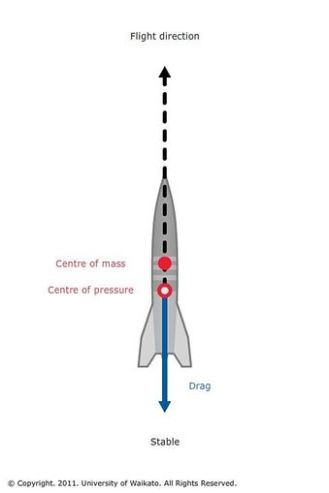Today I explored the basics of aerodynamics in preparation for the building of our rocket. Aerodynamics is the “study of forces and the resulting motion of objects through the air” (Smithsonian National Air and Space Museum). When an object is moving through the air it is experiences a type of friction called friction drag. Drag is caused by the friction between the object and the air molecules. On a surface moving through air there is a thin layer on the outside of the object called the “boundary layer,” where the drag occurs. 
After reading about the basics of drag I explored deeper how it affects the success of a rocket launch. The amount of drag that a rocket experiences depends mainly on the shape and size of the nose cone, the size of the body and how fast the rocket is moving. If a rocket is going slower than the speed of sound (1200 km/h)–which is is–then the best shape for a nose cone is round rather than a sharp point.
As for the fins, the idea is that they cause a strong drag force, causing them to stay back and the nose of the rocket to go straight into the air, preventing it from wobbling.
https://howthingsfly.si.edu/aerodynamics/friction-drag
http://www.sciencelearn.org.nz/Contexts/Rockets/Science-Ideas-and-Concepts/Rocket-aerodynamics

Do you know why a the best shape for a nose cone is round instead of a point (below the speed of sound)? I would be really interested in seeing the physics behind that. I also think explaining more about the functions of the fins would help your reader in understanding the concepts.
Maybe something to explore in the future is the mathematics behind aerodynamics? You could check out a few other student’s blogs for posts about the angle of attack, lift, etc.
Are there equations to calculate the drag for things like the fins and cone? Or are you sticking to estimates and then analyzing the results after the experiment?